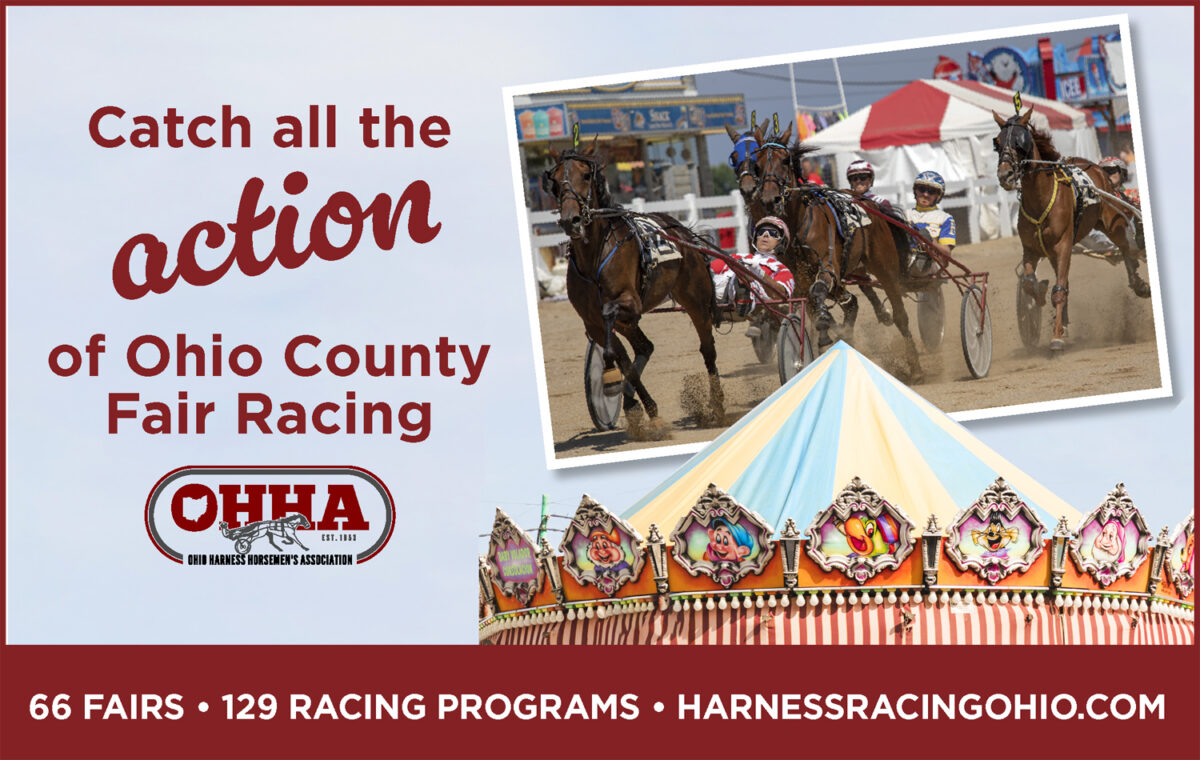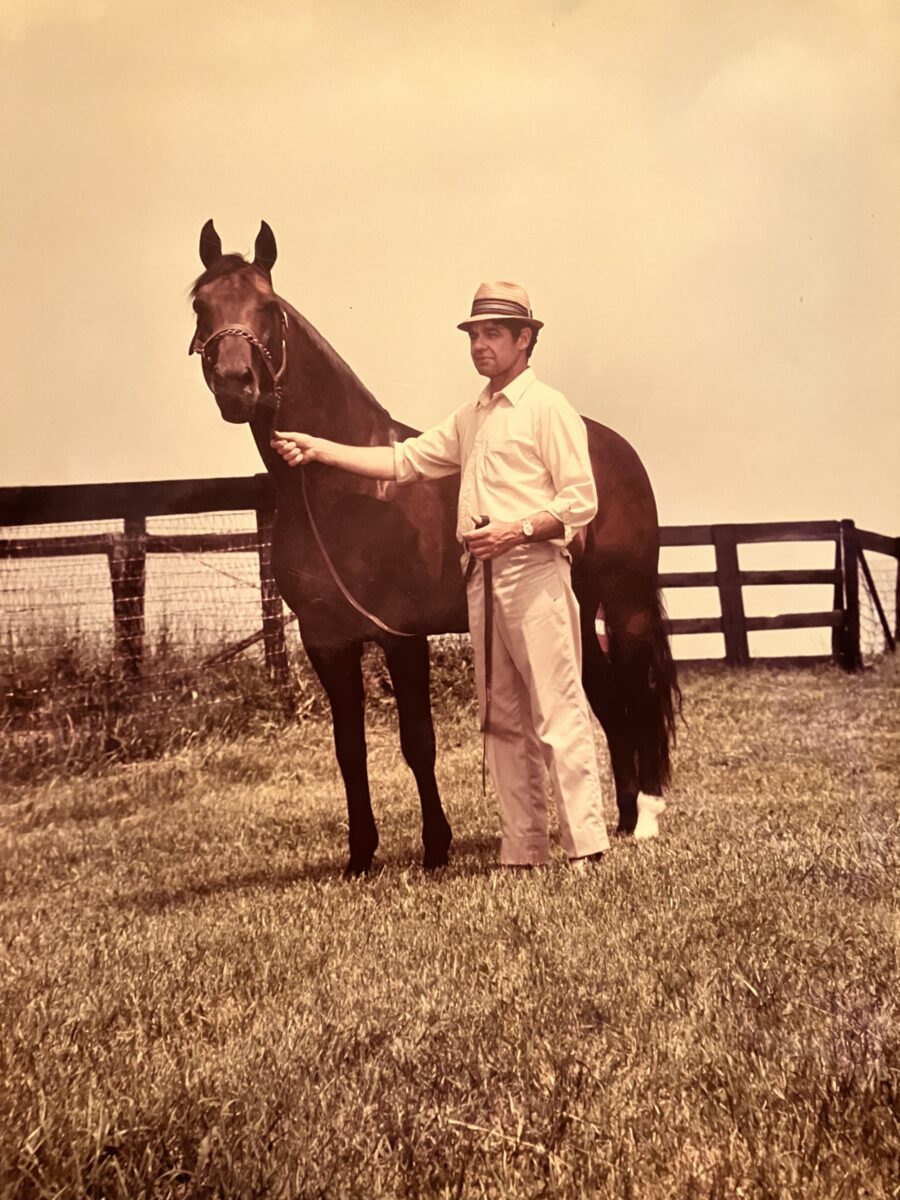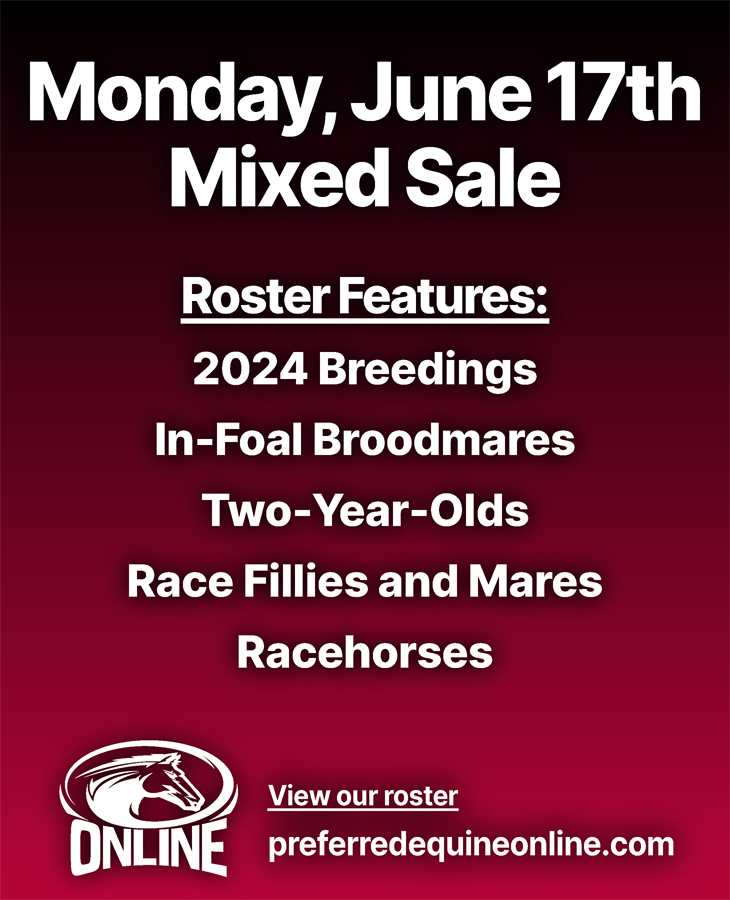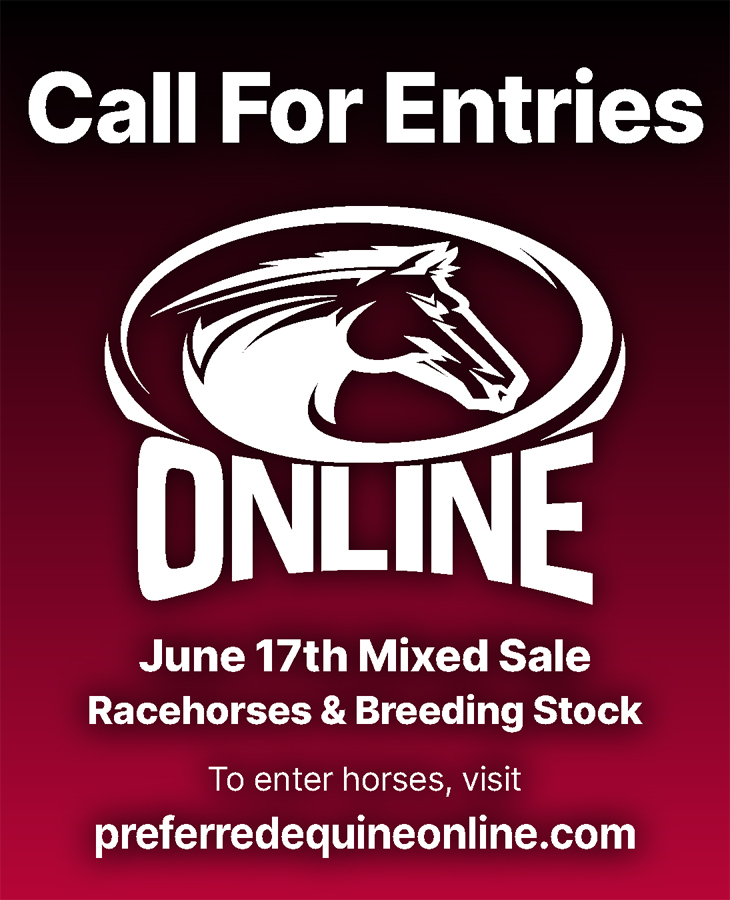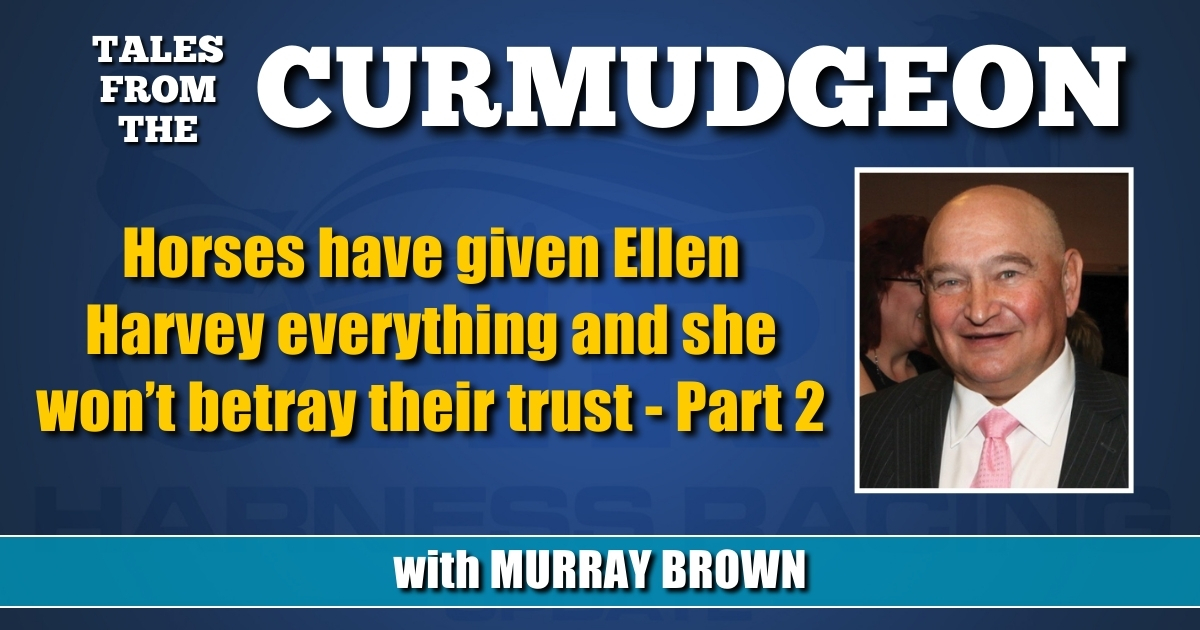

Horses have given Ellen Harvey everything and she won’t betray their trust, Part 2
by Murray Brown
Part 1 is here.
We continue the story of Ellen Harvey and her family in the winter of Albatross’ 2-year-old year.
Then came the stable’s loss of Albatross.
“That winter, [my] dad [Harry Harvey] told [Albatross’ owner Bert] James he would likely get many inquiries about buying the horse and [dad] hoped [James] would give him a chance to top the offers. James may have been too new to the sport to realize that dad could have topped the offer, which was $1.25 million, with help from Tim and/or Art Rooney, Delvin [Miller], Hugh Grant, Hanover Shoe Farm, etc., through his years managing Adios.
“Three weeks before he was to make the first start of his 3-year-old season, dad was told Albatross had been sold and would move to the Stanley Dancer stable. It was devastating. Aside from now dashed dreams, dad had a big farm, a big payroll, four children, a six-horse truck (that I once drove to basketball practice). But he couldn’t do anything about it. Albatross belonged to Bert James.
“The local paper did a story on Albatross’ last training trip at Arden Downs. It was nearly a full page and there was a photo of dad sitting on a bench at the side of the track, stopwatch in hand, head down. It was heartbreaking to see then and to think of now. Things were somber at home and I couldn’t escape the loss at school, either.
“Mr. James still had about a dozen horses with dad, including the stakes filly Saucy Wave. The late Joe Goldstein, working for the USTA, kept calling dad over and over, asking him to talk with a writer from Sports Illustrated for a story about Albatross. Dad was never one to indulge too much with the press anyway. He certainly did not want to talk about losing Albatross.
“Dad eventually relented. He said that yes, ‘it was disappointing’ and yes, he wished the horse had not left. The story came out and all the James horses were quickly gone.
“Dad never once saw Albatross again.”
Let’s move on to your life and career.
“I went to Boston College and graduate school at the University of Washington in Seattle on a fellowship. Hugh Grant established a college fund which paid for my tuition as well as that of my siblings. He and his wife Sue were very kind to our family.
“I taught special needs infants and toddlers in Boston and was most disheartened to learn I was making less than the program’s secretary.
“I knew I was an above average writer and I knew harness racing. That was when North American Harness Racing Marketing Association (NAHRMA) was first established and the director, Bob Rossilli, lived near me in Reading, MA.
“When the research program I worked for ended, I started with NAHRMA full time, selling sponsorships. Later I produced and syndicated a radio show and then a TV show called The World in Harness on a precursor to CNBC. Stan Bergstein was host and it was produced at The Meadowlands. I helped triple availability of the show through syndication.
“Allen Gutterman was promoted from publicity director at The Meadowlands and I was hired to take his place. I was there for five and a half years, 1989 through 1994. It felt like 50. I never worked harder or longer before or since. There were two writers, Anne Doolin and Gen Sullivan, statistician Bob “Hollywood” Heyden, four secretaries, couriers and the TV crew.
“We raced six days a week, produced a TV show for the MSG Network every day, wrote barn notes with multiple stories and a result story every racing day. There was a high level of expectation for everything anyone did at The Meadowlands. Stories were never, ever, just a recitation of the chart or past performance lines.
“As the announcer Tom Durkin used to say, ‘We’re at the top of the food chain. No one eats us.’ The highest level of performance was expected — and given — from everyone, all the time.
“I was also PR director for the thoroughbred meet. With Dave Johnson added to that meet, we had more announcers than needed and when Ken Warkentin joined, I asked him to shift to an educational role and develop an announcer’s fantasy camp.
“Peter Kleinhans, who was then training horses at Freehold, took the class, laid over the field and soon joined us on the MSG show as a host. Peter later went to law school at the University of Michigan and when I was asked to suggest an announcer for the soon to open Hoosier Park, I brought up Peter. He called the races there, a few hundred miles from Ann Arbor, while studying law. He calls at Oak Grove, [in Kentucky] now, commuting from New York City, between gigs with his band. Peter really likes to call races.”
What about your time after The Meadowlands?
“Tim O’Leary left Harness Racing Communications (HRC), the successor to NAHRMA, and I was hired in September of 1994 to take his place.
“In 1995, HRC was absorbed by the USTA and we became, as former USTA CEO Fred Noe said, ‘the offshore division of the USTA.’
“I was with the USTA for 22 years. I wrote or pitched hundreds, maybe 1,000 or more, Associated Press stories, pitched and placed features in every major and scores of minor news outlets in the U.S. and many in Canada. I managed the two-year Niatross tour and either Gen Sullivan or I traveled with him and Chris Coyle of Walnridge. I won writing awards at the World Trotting Conference twice and wrote a story on Niatross that made one of the Chicken Soup for the Soul books.
“I placed a story on the birth of Peace Corps’ first foal on Reuters wire service and above the fold in the Louisville Courier Journal, and suggested Julie Krone when the connections of Moni Maker said they wanted to try for the under-saddle record. Gen and I knew Julie from The Meadowlands and I publicized that ride and worked out logistics. I wrote and produced the video of that day, “Perfect Together” on YouTube.
“With the help of Ken Weingartner, HRC helped publicize, wrote and placed stories on every Hambo, Little Brown Jug, Breeders Crown and wrote maybe a million words in a newsletter that went to hundreds of media every Monday. With an assist from Andrew Cohen, I got harness racing on the CBS Sunday Morning Show. I got hundreds of requests for help from media members over those 22 years; I just got a call from a writer last week for help on two stories.
“I asked Fred Noe if I could write a curriculum for and try a few seminars for prospective new owners, as the NTRA folks were doing at the time. I continued for eight years, taught others to do them and brought in more than 150 new owners, many of whom called me with questions years later. I got to share in the happiest moments of people’s lives and met some of the finest people walking the earth.
“I was involuntarily retired by the USTA at the end of 2017. I now split my time between Aiken, SC and Brownington, VT. Coincidentally, our town of fewer than 1,000 residents in Vermont is home to a small Amish community and standardbreds trot past my house all day.”
Author’s Note: If you are a harness racing fan you owe it to yourself to watch “Perfect Together: Moni Maker and Julie Krone” on YouTube. It is available in two parts. Part one is here. Part two is here. I watched it once again. After nearly a quarter of a century, it still brought tears to my eyes.
Since leaving the USTA you have been a strong proponent of re-instituting the requirement of freeze branding our standardbreds.
“Yes, I have. The plan to chip only was brought up in a staff meeting when I was still employed there, I countered with what I thought was an important consideration – visible identity enables those looking for our horses in the slaughter pipeline to find and extract them. No one — not the USTA, not any track or any member — is compelled to spend a cent or do anything about it, but there are people who want to get them out of that pipeline.
“I’d done it myself many times; I explained that they’re a brown horse in a sea of brown horses crammed into a pen, kicking, striking and biting each other. Not a place to elbow your way in with a scanner. The lack of visible ID would undermine the efforts of and create an unnecessary risk for people trying to help our horses.
“Years ago, I heard Russell Williams say, ‘We can make a living with these horses because we teach them to trust us.’ He said words to the effect that we owe them a decent life and a decent death because we taught them we’d do them no harm when we ask them to belie their instinct to flee when frightened.
“I took his words to heart. I hoped, in the years prior to 2019, when the USTA dropped branding as part of registration, that they’d think better of that decision. They didn’t.
“I’m the fifth generation of my family to make a living with horses. Everything I have is derived from a horse who trusted a human to do them no harm. I wasn’t going to betray that trust.
“By 2021, I was no longer on USTA staff, hope was no longer a plan and I didn’t see anyone pushing back against the lack of visible ID. I worked for months with many others who shared my position, to convey to USTA directors that their constituents want horses to have the benefit of both forms of ID as part of registration.
“The rule changes we put forth were accepted at about half the district meetings, all conducted via zoom. I was on every call, usually with my rule change co-sponsors, Keith Gisser and Trish Soulsby.
“The path to the annual meeting in 2022 and the meeting itself was unpleasant, about as unpleasant as Little Big Horn was for Custer.
“I continue to advocate for standardbreds. I’m the only non-vet on The Foundation for The Horse’s advisory group on horses at risk. I’ve conducted four workshops on horse care for the plain community in Lancaster County, PA and edited graphics on horse care for publications catering to those who drive our horses after they leave the track. I’ve made friends there with many outstanding horsemen working to advance the care our horses need to do their new jobs.
“Every few days I get a call, text, email from someone asking me for help with a standardbred in peril. I do what I can, I always will. I owe it to them.”








